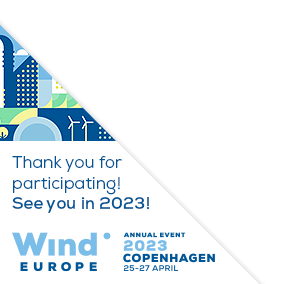Posters
Siblings:
ProceedingsProgrammeSpeakersPostersContent PartnersGlobal Markets TheatreWindTalks for InnovationProgramme Committee & Abstract ReviewersSpeaker's DashboardCome meet the poster presenters to ask them questions and discuss their work
Check the programme for our poster viewing moments. For more details on each poster, click on the poster titles to read the abstract. On Wednesday, 6 April at 15:30-16:15, join us on Level 3 of the Conference area for the Poster Awards!

PO246: Turbulence Intensity normalisation of power curves and large-scale fleet validation
Julien Tissot, Head of R&D, i4SEE TECH GmbH
Abstract
Turbulence Intensity (TI) affects wind turbine power curve analysis when performed using 10-minute datasets. This influence has been well documented, its mathematical origin is understood and its influence on the Power Curve (PC) characterised. Over the years some methods have emerged to counteract the influence on resulting bias on power curves and, since its update in 2017, the IEC 61400-12-1 has even added a method for turbulence intensity correction, annex M. Although informative, this annex provides a common ground to deal with this issue that should be used by the wind industry. Unlike air density normalisation of the wind speed, which can be performed fairly easily given the availability of the appropriate set of signals, i.e. pressure, humidity and temperature, the approach for TI correction is more convoluted. This high perceived complexity can be seen as a barrier to entry by data analysts and could explain its low adoption by the community. In this presentation, we assess the validity of the IEC annex M methodology when applied to wind measurement from SCADA, rather than undisturbed met mast or lidar measurements. We also discuss its deployment for more than 3000 wind turbines currently assessed by i4SEE, including some of the related challenges. The lessons learned from this large-scale application will provide the community with a better understanding of behaviour of the method and hopefully contribute to a greater adoption. Some outlying cases found during the analysis could even bring insights for future iteration of the method, i.e. its enhancement or simplification.










Follow the event on: